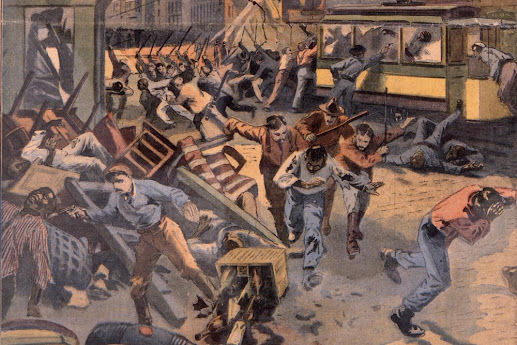By JOSHUA GOODMAN
Yesterday

Confiscated shark fins are shown during a news conference, Thursday, Feb. 6, 2020, in Doral, Fla. A spate of recent criminal indictments highlights how U.S. companies, taking advantage of a patchwork of federal and state laws, are supplying a market for fins that activists say is as reprehensible as the now-illegal trade in elephant ivory once was. (AP Photo/Wilfredo Lee, File)
MIAMI (AP) — It’s one of the seafood industry’s most gruesome hunts.
Every year, the fins of as many as 73 million sharks are sliced from the backs of the majestic sea predators, their bleeding bodies sometimes dumped back into the ocean where they are left to suffocate or die of blood loss.
But while the barbaric practice is driven by China, where shark fin soup is a symbol of status for the rich and powerful, America’s seafood industry isn’t immune from the trade.
A spate of recent criminal indictments highlights how U.S. companies, taking advantage of a patchwork of federal and state laws, are supplying a market for fins that activists say is as reprehensible as the now-illegal trade in elephant ivory once was.
A complaint quietly filed last month in Miami federal court accused an exporter based in the Florida Keys, Elite Sky International, of falsely labeling some 5,666 pounds of China-bound shark fins as live Florida spiny lobsters. Another company, south Florida-based Aifa Seafood, is also under criminal investigation for similar violations, according to two people on the condition of anonymity to discuss the ongoing probe. The company is managed by a Chinese-American woman who in 2016 pleaded guilty to shipping more than a half-ton of live Florida lobsters to her native China without a license.
The heightened scrutiny from law enforcement comes as Congress debates a federal ban on shark fins — making it illegal to import or export even foreign-caught fins. Every year, American wildlife inspectors seize thousands of shark fins while in transit to Asia for failing to declare the shipments.
___
This story was supported by funding from the Walton Family Foundation. The AP is solely responsible for all content.
___
While not all sharks are killed just for their fins, none of the other shark parts harvested in the U.S. and elsewhere — such as its meat, jaws or skin — can compete with fins in terms of value. Depending on the type of shark, a single pound of fins can fetch hundreds of dollars, making it one of the priciest seafood products by weight anywhere.
“If you’re going out of business because you can no longer sell fins, then what are you actually fishing for?,” said Whitney Webber, a campaign director at Washington-based Oceana, which supports the ban.
Since 2000, federal law has made it illegal to cut the fins off sharks and discard their bodies back into the ocean. However, individual states have wide leeway to decide whether or not businesses can harvest fins from dead sharks at a dock, or import them from overseas.
The legislation working its way through Congress would impose a near-total ban on trade in fins, similar to action taken by Canada in 2019. The legislation, introduced in 2017 by a bipartisan group of lawmakers, has majority support in both the House and Senate.
Among those opposing the proposed ban is Elite, which has hired lobbyists to urge Congress to vote against the bill, lobbying records show.
It’s not known where Elite obtained its fins. But in the criminal complaint, the company was also accused of sourcing lobster from Nicaragua and Belize that it falsely stated was caught in Florida. The company, affiliated with a Chinese-American seafood exporter based in New York City, was charged with violating the Lacey Act, a century-old statute that makes it a crime to submit false paperwork for any wildlife shipped overseas.
An attorney for Elite wouldn’t comment nor did two representatives of Aifa when reached by phone.
Overfishing has led to a 71% decline in shark species since the 1970s. The International Union for Conservation of Nature, a Switzerland-based group that tracks wildlife populations, estimates that over a third of the world’s 500-plus shark species are threatened with extinction.
Contrary to industry complaints about excessive regulations, the U.S. is hardly a model of sustainable shark management, said Webber. She pointed to a recent finding by the National Oceanic and Atmospheric Administration that less than 23% of the 66 shark stocks in U.S. waters are safe from overfishing. The status of more than half of shark stocks isn’t even known.
The situation in Europe is even worse: a new report from Greenpeace, called “Hooked on Sharks,” revealed what it said is evidence of the deliberate targeting of juvenile blue sharks by fishing fleets from Spain and Portugal. The report found that the U.S. is the world’s fourth-largest shark exporter behind Spain, China and Portugal, with exports of 3.2 million kilograms of meat — but not fins — worth over $11 million in 2020.
Webber said rather than safeguard a small shark fishing industry, the U.S. should blaze the trail to protect the slow-growing, long-living fish.
“We can’t ask other countries to clean up their act if we’re not doing it well ourselves,” said Webber.
She said the current laws aren’t enough of a deterrent in an industry where bad actors drawn by the promise of huge profits are a recurrent problem.
Case in point: Mark Harrison, a Florida fisherman who in 2009 pleaded guilty to three criminal counts tied to his export of shark fins, some of them protected species. He was ordered to pay a $5,000 fine and was banned from having anything to do with the shark fin trade for five years.
But federal prosecutors allege that he reconnected to associates of his former co-conspirators in 2013 in violation of the terms of his probation. He was arrested in 2020 on mail and wire fraud conspiracy charges as part of a five-year investigation, called Operation Apex, targeting a dozen individuals who also allegedly profited from drug trafficking. Prosecutors allege Harrison’s Florida-based Phoenix Fisheries was a “shell company” for individuals based in California, where possession of fins has been illegal since 2011.
As part of the bust, the Feds found documents about some 6 tons of shark fin exports and seized 18 totoaba fish bladders, a delicacy in Asia taken from an endangered species. They also seized 18,000 marijuana plants, multiple firearms and $1 million in diamonds — pointing to a criminal enterprise that transcended illegal seafood and stretched deep into the Mexican and Chinese mafia underworlds.
“This operation is about much more than disrupting the despicable practice of hacking the fins off sharks and leaving them to drown in the sea to create a bowl of soup,” Bobby Christine, then U.S. Attorney for the Southern District of Georgia, said at the time.
An attorney for Harrison declined to comment on the case, which has yet to go to trial. But unlike his co-defendants, Harrison isn’t implicated in any drug-related or weapons offenses. Supporters say he has complied with all laws and is being unfairly targeted by bureaucrats overlooking the key role he played in the 1980s, when sharks were even more threatened, developing the U.S. shark fishery.
“They appear to be using the current widespread empathy toward sharks for publicity and career advancement in what would otherwise be a very routine matter,” reads a website run by supporters seeking to raise $75,000 for a “Shark Defense Fund” to help Harrison fight the charges.
“In the process, they are seeking to tarnish Mark’s reputation and deal a blow to the American shark fishery,” according to the website, which was taken down after the AP started making inquiries.
Demian Chapman, who heads shark research at the Mote Marine Laboratory in Sarasota, Florida, said that the push to ban commercial fishing of sharks could backfire.
“If you subtract the U.S. from the fin trade entirely, it won’t do anything to directly affect international demand and it’s likely that other countries, with far less regulation of their fisheries, will fill the void,” said Chapman.
He said the bill introduced by Sen. Cory Booker, a Democrat of New Jersey, appears to be driven by “shark fans” — not “shark fins” — and those who want to see the fish species afforded the same very high level of protection afforded to marine mammals and sea turtles. He said few in the U.S. are involved in the cruel, wasteful practice of shark finning and that the U.S.′ role as a transit hub for fins can be remedied without punishing American fishers.
“There’s a disconnect between perceptions and reality,” said Chapman. “In the 25 years I’ve been studying sharks, they’ve gone from demon fish to a group of species that many people want to protect. This is great but we have to support science-based management measures that address the real problems.”
___
Joshua Goodman on Twitter: @APJoshGoodman
___
Contact AP’s global investigative team at Investigative@ap.org or https://www.ap.org/tips/

Confiscated shark fins are shown during a news conference, Thursday, Feb. 6, 2020, in Doral, Fla. A spate of recent criminal indictments highlights how U.S. companies, taking advantage of a patchwork of federal and state laws, are supplying a market for fins that activists say is as reprehensible as the now-illegal trade in elephant ivory once was. (AP Photo/Wilfredo Lee, File)
MIAMI (AP) — It’s one of the seafood industry’s most gruesome hunts.
Every year, the fins of as many as 73 million sharks are sliced from the backs of the majestic sea predators, their bleeding bodies sometimes dumped back into the ocean where they are left to suffocate or die of blood loss.
But while the barbaric practice is driven by China, where shark fin soup is a symbol of status for the rich and powerful, America’s seafood industry isn’t immune from the trade.
A spate of recent criminal indictments highlights how U.S. companies, taking advantage of a patchwork of federal and state laws, are supplying a market for fins that activists say is as reprehensible as the now-illegal trade in elephant ivory once was.
A complaint quietly filed last month in Miami federal court accused an exporter based in the Florida Keys, Elite Sky International, of falsely labeling some 5,666 pounds of China-bound shark fins as live Florida spiny lobsters. Another company, south Florida-based Aifa Seafood, is also under criminal investigation for similar violations, according to two people on the condition of anonymity to discuss the ongoing probe. The company is managed by a Chinese-American woman who in 2016 pleaded guilty to shipping more than a half-ton of live Florida lobsters to her native China without a license.
The heightened scrutiny from law enforcement comes as Congress debates a federal ban on shark fins — making it illegal to import or export even foreign-caught fins. Every year, American wildlife inspectors seize thousands of shark fins while in transit to Asia for failing to declare the shipments.
___
This story was supported by funding from the Walton Family Foundation. The AP is solely responsible for all content.
___
While not all sharks are killed just for their fins, none of the other shark parts harvested in the U.S. and elsewhere — such as its meat, jaws or skin — can compete with fins in terms of value. Depending on the type of shark, a single pound of fins can fetch hundreds of dollars, making it one of the priciest seafood products by weight anywhere.
“If you’re going out of business because you can no longer sell fins, then what are you actually fishing for?,” said Whitney Webber, a campaign director at Washington-based Oceana, which supports the ban.
Since 2000, federal law has made it illegal to cut the fins off sharks and discard their bodies back into the ocean. However, individual states have wide leeway to decide whether or not businesses can harvest fins from dead sharks at a dock, or import them from overseas.
The legislation working its way through Congress would impose a near-total ban on trade in fins, similar to action taken by Canada in 2019. The legislation, introduced in 2017 by a bipartisan group of lawmakers, has majority support in both the House and Senate.
Among those opposing the proposed ban is Elite, which has hired lobbyists to urge Congress to vote against the bill, lobbying records show.
It’s not known where Elite obtained its fins. But in the criminal complaint, the company was also accused of sourcing lobster from Nicaragua and Belize that it falsely stated was caught in Florida. The company, affiliated with a Chinese-American seafood exporter based in New York City, was charged with violating the Lacey Act, a century-old statute that makes it a crime to submit false paperwork for any wildlife shipped overseas.
An attorney for Elite wouldn’t comment nor did two representatives of Aifa when reached by phone.
Overfishing has led to a 71% decline in shark species since the 1970s. The International Union for Conservation of Nature, a Switzerland-based group that tracks wildlife populations, estimates that over a third of the world’s 500-plus shark species are threatened with extinction.
Contrary to industry complaints about excessive regulations, the U.S. is hardly a model of sustainable shark management, said Webber. She pointed to a recent finding by the National Oceanic and Atmospheric Administration that less than 23% of the 66 shark stocks in U.S. waters are safe from overfishing. The status of more than half of shark stocks isn’t even known.
The situation in Europe is even worse: a new report from Greenpeace, called “Hooked on Sharks,” revealed what it said is evidence of the deliberate targeting of juvenile blue sharks by fishing fleets from Spain and Portugal. The report found that the U.S. is the world’s fourth-largest shark exporter behind Spain, China and Portugal, with exports of 3.2 million kilograms of meat — but not fins — worth over $11 million in 2020.
Webber said rather than safeguard a small shark fishing industry, the U.S. should blaze the trail to protect the slow-growing, long-living fish.
“We can’t ask other countries to clean up their act if we’re not doing it well ourselves,” said Webber.
She said the current laws aren’t enough of a deterrent in an industry where bad actors drawn by the promise of huge profits are a recurrent problem.
Case in point: Mark Harrison, a Florida fisherman who in 2009 pleaded guilty to three criminal counts tied to his export of shark fins, some of them protected species. He was ordered to pay a $5,000 fine and was banned from having anything to do with the shark fin trade for five years.
But federal prosecutors allege that he reconnected to associates of his former co-conspirators in 2013 in violation of the terms of his probation. He was arrested in 2020 on mail and wire fraud conspiracy charges as part of a five-year investigation, called Operation Apex, targeting a dozen individuals who also allegedly profited from drug trafficking. Prosecutors allege Harrison’s Florida-based Phoenix Fisheries was a “shell company” for individuals based in California, where possession of fins has been illegal since 2011.
As part of the bust, the Feds found documents about some 6 tons of shark fin exports and seized 18 totoaba fish bladders, a delicacy in Asia taken from an endangered species. They also seized 18,000 marijuana plants, multiple firearms and $1 million in diamonds — pointing to a criminal enterprise that transcended illegal seafood and stretched deep into the Mexican and Chinese mafia underworlds.
“This operation is about much more than disrupting the despicable practice of hacking the fins off sharks and leaving them to drown in the sea to create a bowl of soup,” Bobby Christine, then U.S. Attorney for the Southern District of Georgia, said at the time.
An attorney for Harrison declined to comment on the case, which has yet to go to trial. But unlike his co-defendants, Harrison isn’t implicated in any drug-related or weapons offenses. Supporters say he has complied with all laws and is being unfairly targeted by bureaucrats overlooking the key role he played in the 1980s, when sharks were even more threatened, developing the U.S. shark fishery.
“They appear to be using the current widespread empathy toward sharks for publicity and career advancement in what would otherwise be a very routine matter,” reads a website run by supporters seeking to raise $75,000 for a “Shark Defense Fund” to help Harrison fight the charges.
“In the process, they are seeking to tarnish Mark’s reputation and deal a blow to the American shark fishery,” according to the website, which was taken down after the AP started making inquiries.
Demian Chapman, who heads shark research at the Mote Marine Laboratory in Sarasota, Florida, said that the push to ban commercial fishing of sharks could backfire.
“If you subtract the U.S. from the fin trade entirely, it won’t do anything to directly affect international demand and it’s likely that other countries, with far less regulation of their fisheries, will fill the void,” said Chapman.
He said the bill introduced by Sen. Cory Booker, a Democrat of New Jersey, appears to be driven by “shark fans” — not “shark fins” — and those who want to see the fish species afforded the same very high level of protection afforded to marine mammals and sea turtles. He said few in the U.S. are involved in the cruel, wasteful practice of shark finning and that the U.S.′ role as a transit hub for fins can be remedied without punishing American fishers.
“There’s a disconnect between perceptions and reality,” said Chapman. “In the 25 years I’ve been studying sharks, they’ve gone from demon fish to a group of species that many people want to protect. This is great but we have to support science-based management measures that address the real problems.”
___
Joshua Goodman on Twitter: @APJoshGoodman
___
Contact AP’s global investigative team at Investigative@ap.org or https://www.ap.org/tips/








/cloudfront-ap-southeast-2.images.arcpublishing.com/nzme/TB3GR6R6QDN57A2I2ZHMVVPJBM.jpg)






